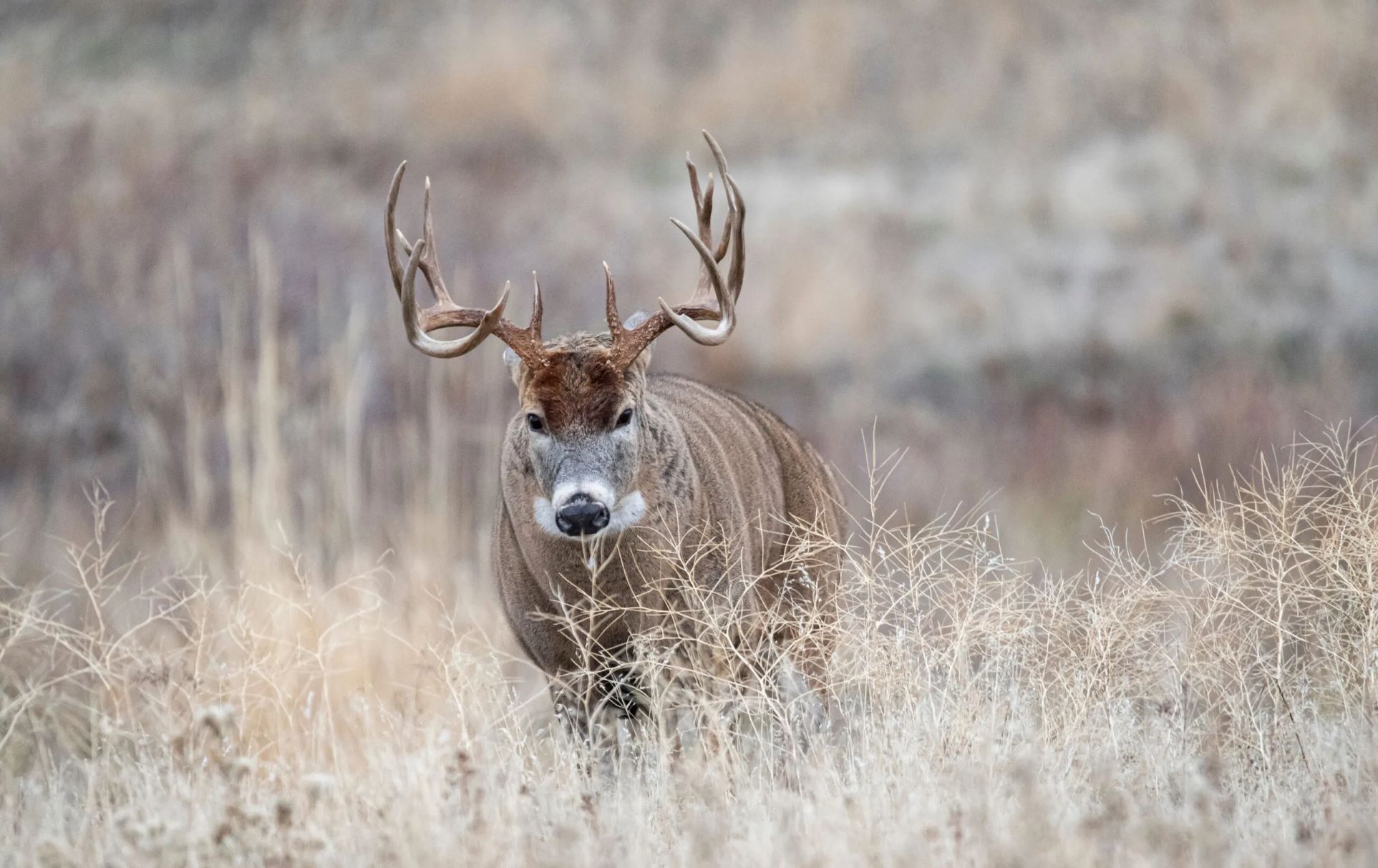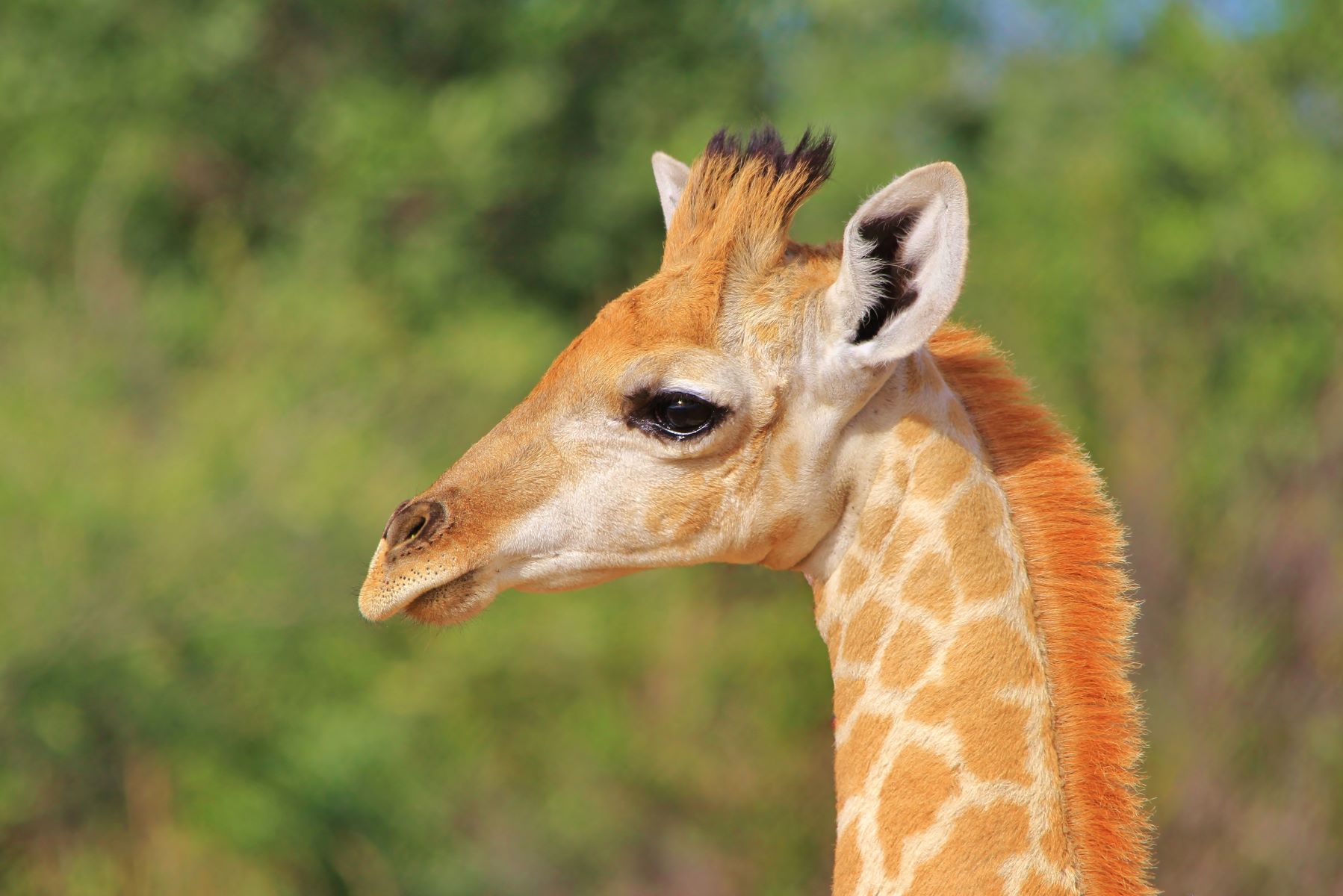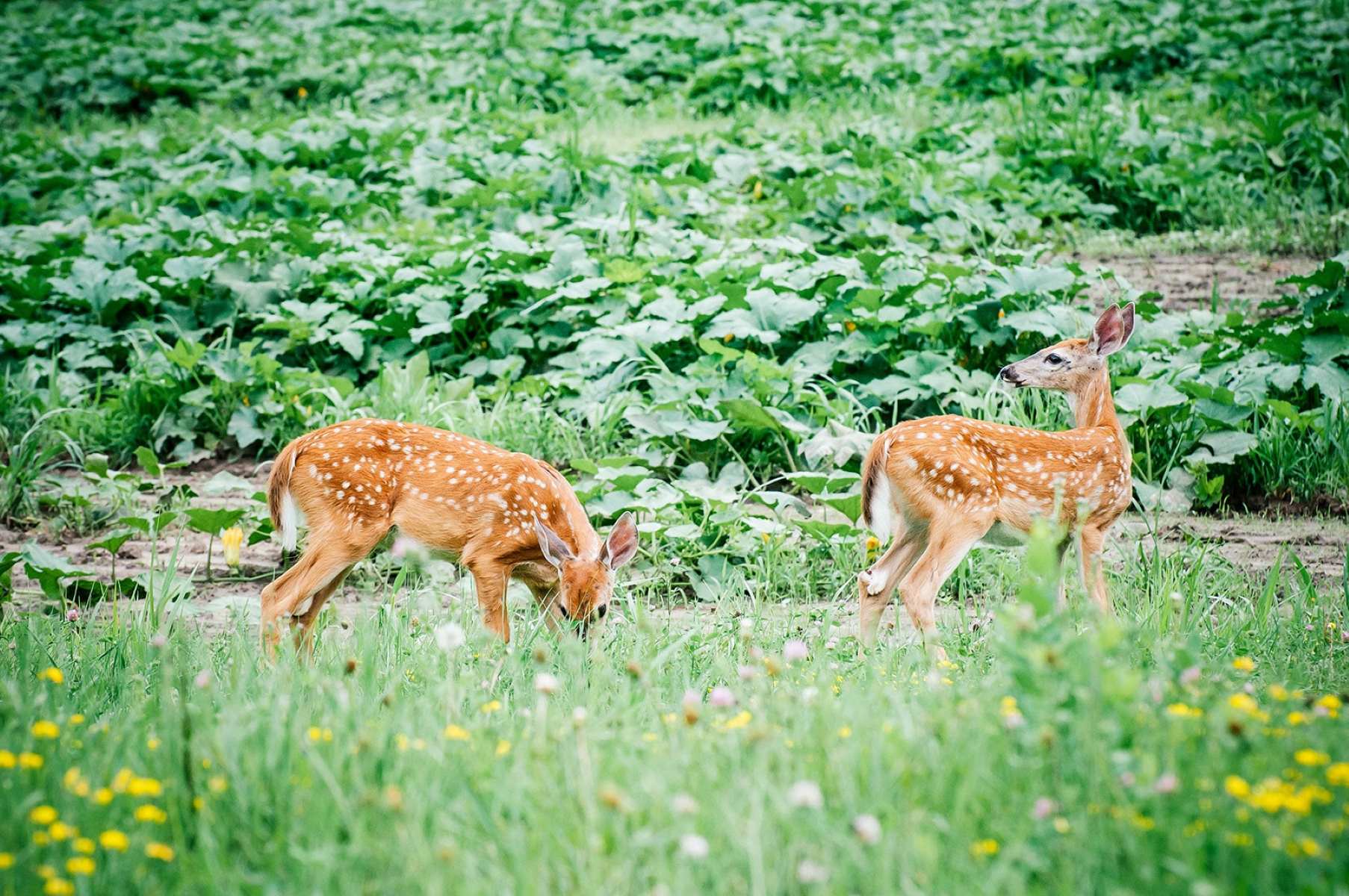Home>Pets & Animals>Listen To The Incredible Sound Of A Buck Deer Grunt!


Pets & Animals
Listen To The Incredible Sound Of A Buck Deer Grunt!
Published: February 6, 2024
Discover the mesmerizing sound of a buck deer grunt in this captivating audio clip. Immerse yourself in the world of pets and animals with this amazing wildlife experience!
(Many of the links in this article redirect to a specific reviewed product. Your purchase of these products through affiliate links helps to generate commission for Regretless.com, at no extra cost. Learn more)
Table of Contents
Introduction
When it comes to the great outdoors, there's something truly mesmerizing about the sounds of nature. From the gentle rustling of leaves to the melodic songs of birds, each sound contributes to the symphony of the wild. Among these captivating sounds is the deep, resonant grunt of a buck deer. It's a sound that evokes a sense of mystery and power, drawing us into the world of these majestic creatures.
The grunt of a buck deer is a distinctive vocalization that serves various purposes in the animal kingdom. Whether you're a seasoned hunter, a wildlife enthusiast, or simply someone who appreciates the beauty of nature, understanding and appreciating the significance of buck deer grunts can deepen your connection to the natural world.
In this article, we'll delve into the captivating world of buck deer grunts, exploring their significance, the science behind them, and how you can listen to and even record these incredible vocalizations. So, sit back, relax, and prepare to embark on a journey into the heart of the wilderness as we uncover the remarkable world of buck deer grunts.
Read more: The Surprising Sound Of The Fox Revealed!
Understanding Buck Deer Grunts
Buck deer grunts are a fundamental form of communication among these remarkable creatures. The grunt, characterized by its deep and guttural tone, serves as a means for bucks to convey their presence, dominance, and even their emotional state to other deer in the vicinity. It's a versatile vocalization that holds significant meaning in the intricate social dynamics of deer populations.
During the rut, which is the peak of the mating season for deer, bucks emit deep, resonant grunts to assert their dominance and attract does. These grunts can vary in intensity and duration, conveying essential information about the buck's size, strength, and overall fitness. Additionally, bucks may use grunts to challenge other males in the area, establishing their authority and vying for the attention of receptive does.
Moreover, buck deer grunts are not limited to the rutting season. Outside of this period, grunts can also serve as a form of contact call, allowing deer to maintain communication with their herd members. This vocalization helps them stay connected, especially in dense vegetation or low-visibility environments, ensuring that the group remains cohesive and coordinated.
Understanding the nuances of buck deer grunts provides valuable insights into the behavior and social structure of these magnificent animals. It offers a glimpse into their world, shedding light on the intricate ways in which they interact and communicate with one another. By recognizing the significance of these vocalizations, we gain a deeper appreciation for the rich tapestry of wildlife and the vital role that each sound plays in the symphony of nature.
The Science Behind Buck Deer Grunts
The remarkable vocalizations of buck deer grunts are rooted in the fascinating realm of animal behavior and communication. These deep, resonant sounds serve as a crucial mode of expression, conveying a wealth of information to other deer within their environment. From a scientific standpoint, the study of buck deer grunts offers profound insights into the evolutionary, physiological, and ecological dimensions of these vocalizations.
At the core of buck deer grunts lies a complex interplay of anatomical structures and physiological processes. The production of grunts involves the intricate coordination of the deer's respiratory system, larynx, and vocal folds. When a buck emits a grunt, air is expelled from its lungs, passing through the larynx where the vocal folds modulate the airflow, resulting in the characteristic low-frequency sound. This process is finely tuned, allowing bucks to produce grunts with varying pitch and intensity, each carrying distinct information for their counterparts.
Furthermore, the science behind buck deer grunts extends to their role in the broader ecological context. These vocalizations play a pivotal part in maintaining social cohesion and hierarchical dynamics within deer populations. Through grunts, bucks assert their dominance, establish territories, and communicate their fitness to potential mates. The intricate nuances of these vocalizations reflect the evolutionary adaptations that have shaped the behavior of deer, underscoring the significance of vocal communication in their survival and reproductive success.
From an ecological perspective, the study of buck deer grunts sheds light on the interconnectedness of wildlife communities and their acoustic interactions. Researchers delve into the acoustic ecology of deer habitats, examining how grunts reverberate through the landscape and influence the behavior of other animals. This interdisciplinary approach unveils the intricate web of relationships between deer and their environment, offering valuable insights into the broader ecosystem dynamics.
In summary, the science behind buck deer grunts encompasses a multifaceted exploration of animal behavior, physiology, and ecological interactions. Through the lens of scientific inquiry, these vocalizations unveil the intricate mechanisms through which deer communicate, navigate their social structures, and adapt to their natural surroundings. By delving into the depths of this scientific realm, we gain a profound appreciation for the profound complexities that underpin the captivating world of buck deer grunts.
How to Listen to Buck Deer Grunts
Listening to the mesmerizing grunts of buck deer requires a blend of patience, attentiveness, and a deep connection to the natural world. Whether you're an avid wildlife enthusiast, a passionate hunter, or simply someone who seeks to immerse themselves in the symphony of nature, the experience of hearing buck deer grunts can be truly captivating. Here are some valuable insights on how to tune in to these remarkable vocalizations:
-
Explore Deer Habitats: To increase your chances of hearing buck deer grunts, venture into areas where deer are known to frequent. Wooded areas, forest edges, and open fields often serve as prime locations for encountering these majestic creatures. Pay attention to signs of deer activity, such as tracks, droppings, and browsing patterns, as they can guide you to potential listening spots.
-
Dusk and Dawn: Buck deer are most active during the twilight hours, particularly around dawn and dusk. These periods, known as crepuscular times, coincide with heightened deer movement and vocalization. Position yourself in a strategic location during these times, allowing the natural light to guide your senses as you listen for the deep, resonant grunts echoing through the landscape.
-
Silence and Stillness: Embrace the power of silence and stillness as you listen for buck deer grunts. Minimize any unnecessary noise or movement to create an environment conducive to wildlife observation. By attuning your senses to the subtle sounds of the wilderness, you heighten your ability to detect the distinct grunts of buck deer amidst the ambient symphony of nature.
-
Patience and Persistence: Listening to buck deer grunts requires patience and persistence. It's essential to invest time in observing and listening, allowing the rhythms of nature to unfold around you. Remember that wildlife encounters are unpredictable, and the experience of hearing buck deer grunts may require multiple visits to their habitats.
-
Use of Technology: Consider utilizing wildlife audio recording equipment to enhance your listening experience. By employing sensitive microphones and recording devices, you can capture the intricate nuances of buck deer grunts, allowing you to revisit and analyze these captivating vocalizations at your leisure.
By embracing these approaches, you can immerse yourself in the captivating world of buck deer grunts, deepening your connection to the natural world and gaining a profound appreciation for the rich tapestry of wildlife sounds that grace the great outdoors. As you embark on this auditory journey, may the enigmatic grunts of buck deer serve as a reminder of the intricate wonders that unfold in the heart of the wilderness.
Tips for Recording Buck Deer Grunts
Recording the captivating grunts of buck deer is an endeavor that requires careful planning, technical finesse, and a deep reverence for the natural world. As you embark on the journey of capturing these remarkable vocalizations, consider the following tips to enhance your recording experience and preserve the essence of buck deer grunts with precision and artistry:
Read more: The Surprising Sound Foxes Actually Make!
1. Selecting the Right Equipment
Invest in high-quality audio recording equipment specifically designed for wildlife sound capture. Opt for a sensitive microphone capable of capturing low-frequency sounds, such as a shotgun or parabolic microphone. Pair it with a portable digital recorder that offers flexibility and superior audio fidelity. Additionally, consider using wind protection accessories to mitigate unwanted noise interference during recording sessions.
2. Strategic Placement
Strategically position your recording equipment in areas frequented by buck deer. Identify natural funnels, trails, or feeding areas where deer are likely to emit grunts. Take into account the prevailing wind direction and ensure that your recording setup remains inconspicuous to avoid disturbing the natural behavior of the deer. Patience and meticulous planning are essential to capturing authentic and undisturbed buck deer vocalizations.
3. Timing and Ambient Conditions
Plan your recording sessions during the peak activity periods of buck deer, particularly during the rutting season. Dawn and dusk are optimal times to capture grunts as deer are most active during these transitional light phases. Pay attention to ambient conditions, such as weather patterns and background noise, and strive to record during calm, tranquil moments when the natural soundscape is undisturbed.
4. Patience and Observation
Exercise patience and keen observation during recording sessions. Allow ample time for the deer to acclimate to the presence of your recording equipment, minimizing their apprehension and ensuring natural vocalizations. Remain attuned to the surrounding wildlife activity, as the interplay of sounds from other animals can enrich the auditory tapestry of your recordings, adding depth and authenticity to the captured grunts.
5. Post-Processing and Analysis
After recording buck deer grunts, engage in post-processing techniques to refine and optimize the captured audio. Utilize audio editing software to remove extraneous noise, enhance clarity, and adjust audio levels as needed. Additionally, consider spectrogram analysis to visualize the frequency components of the grunts, providing valuable insights into the acoustic characteristics of the vocalizations.
By integrating these tips into your recording endeavors, you can embark on a captivating journey of preserving the enigmatic grunts of buck deer with precision and artistry. Through the seamless fusion of technical expertise and a profound appreciation for wildlife vocalizations, you can contribute to the preservation and understanding of these mesmerizing sounds, enriching the tapestry of natural history and acoustic ecology.
Conclusion
In conclusion, the captivating world of buck deer grunts unveils a tapestry of communication, behavior, and ecological interconnectedness that enriches our understanding of wildlife. The deep, resonant vocalizations of buck deer serve as a testament to the intricate web of interactions that define the natural world. From the primal calls of dominance during the rutting season to the subtle contact grunts that bind deer herds together, each vocalization reflects the essence of deer society and their deep-rooted connection to the environment.
As we immerse ourselves in the art of listening to and recording buck deer grunts, we embark on a journey of discovery and appreciation for the subtle nuances of the wild. The symphony of nature, punctuated by the deep, reverberating grunts of bucks, beckons us to embrace the beauty of the great outdoors and cherish the delicate balance of life that unfolds in the heart of the wilderness.
Furthermore, the scientific exploration of buck deer grunts illuminates the profound complexities that underpin these vocalizations. Through the lenses of animal behavior, physiology, and ecological dynamics, we gain valuable insights into the evolutionary adaptations and ecological significance of these vocalizations. The study of buck deer grunts transcends mere observation, offering a gateway to unraveling the intricate mechanisms through which wildlife communicates, thrives, and adapts within their natural habitats.
As we venture into the realm of recording buck deer grunts, we are entrusted with the responsibility of preserving the authenticity and richness of these vocalizations. By employing strategic techniques, patience, and a deep reverence for the natural world, we can capture the essence of buck deer grunts with precision and artistry, contributing to the preservation and understanding of these mesmerizing sounds.
Ultimately, the enigmatic grunts of buck deer serve as a poignant reminder of the profound wonders that unfold in the heart of the wilderness. They beckon us to listen, observe, and appreciate the intricate symphony of nature, where every sound, from the gentle rustling of leaves to the commanding grunts of bucks, weaves together to form a timeless ode to the beauty and resilience of the natural world.













